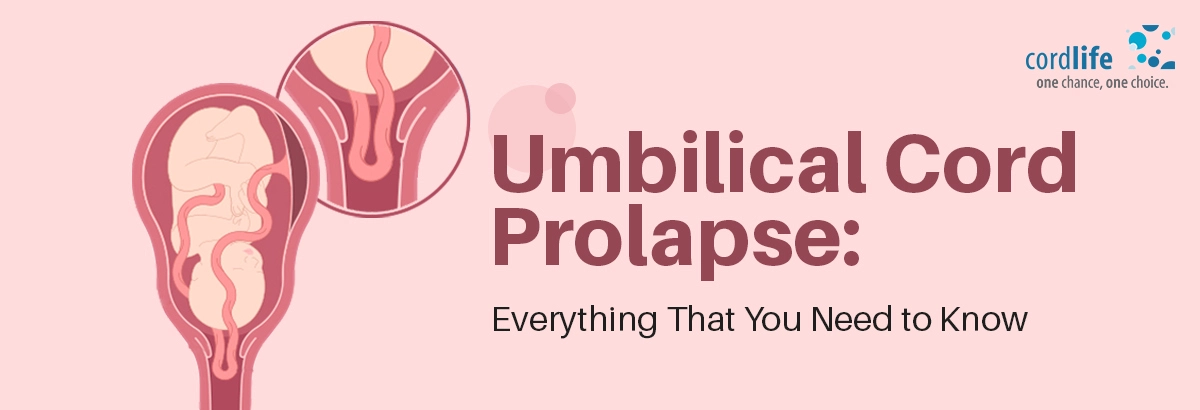Table of Contents
- What Is An Umbilical Cord Prolapse?
- How Many Types of Cord Prolapse Are There?
- What Are The Reasons For Cord Prolapse?
- Premature Rupture of the Membranes
- Excessive Amniotic Fluid
- Delivering Twins
- Baby in Breech Position
- The Unusual Length of the Umbilical Cord
- What Are The Signs and Symptoms of Cord Prolapse?
- What Are The Cord Prolapse Management Methods?
The umbilical cord is a rope-like structure, which is soft and tortuous. It is made up of three blood vessels and one vein. While the vein carries oxygen and food from you to your baby, the two arteries carry the waste back to the placenta. At the time of childbirth, your baby’s head pops out of your womb first. The umbilical cord and placenta come right after your baby’s exit. But, is that the norm always? Maybe not. Due to some umbilical cord complications like velamentous, battledore, or marginal cord insertion, and so on, the baby’s position at the time of delivery may turn out to be slightly different. Among the various umbilical cord complications, umbilical cord prolapse is also one of them.
What Is An Umbilical Cord Prolapse?
Umbilical cord prolapse takes place before your baby is born. The cord that connects you to your baby during pregnancy, slips into the vagina and gets pinched at the time of delivery. In fact, the cord hangs in between the foetal presentation (baby’s head) and the cervix or the vagina.
How Many Types of Cord Prolapse Are There?
Based on what position is the baby in at the time of moving out of your womb; umbilical cord prolapse can be of three types. They include:
Overt Cord Prolapse
Once the membranes have ruptured, the cord falls into the vagina via your cervix, before the baby’s head enters the birth canal.
Funic Presentation
In this situation, the umbilical cord is directed towards the internal cervical or lower uterine segment.
Occult Cord Prolapse
In this condition, the cord may be next to the baby in the birth canal, but it may not be visible to your doctor at the time of childbirth.
What Are The Reasons For Cord Prolapse?
There may be several reasons behind the umbilical cord prolapse condition, but some of the common reasons include:
Premature Rupture of the Membranes
It may occur when the membranes or amniotic sac rupture very early. It may also happen when the healthcare provider ruptures the membrane artificially. Then the cord may emerge first, however, the baby’s head is still high in the uterus. Moreover, as the baby slowly moves out of the womb, cord compression also occurs.
Excessive Amniotic Fluid
As a result of an excessive amount of amniotic fluid, (polyhydramnios), the fluid pressure pushes the cord out.
Delivering Twins
If you are pregnant with twins or more, when the first child pops out of the womb, the baby pushes the cord of the second one out also.
Baby in Breech Position
During childbirth, the baby’s head pops out of the vagina first. However, when the baby is in a breech position, the baby will have his or her feet or butt or both towards the birth canal. As a result, the cord will get space to come out.
The Unusual Length of the Umbilical Cord
A prolapse may also result from abnormally long umbilical cords.
What Are The Signs and Symptoms of Cord Prolapse?
Cord prolapse is a rare condition. According to studies, umbilical cord prolapse occurs in 1 in 300 births. As a result of prolonged cord compression, the blood flow to the baby may not be sufficient. Along with this, the oxygen supply would also be compromised resulting in these symptoms or complications:
- Irregular foetal heartbeat.
- The decline in the foetal heart rate.
- Foetal death or stillbirth.
What Are The Cord Prolapse Management Methods?
Although the complications of cord prolapse can be detected by constant foetal monitoring towards the end of the pregnancy, however, if you feel the cord is already out, consult your healthcare practitioner immediately. As you might have to visit the hospital, where your healthcare provider will take an ultrasound scan and pelvic examination before the delivery of your baby to detect cord prolapse and to further treat it. Therefore, here are the cord prolapse treatment methods:
- At the delivery time, the healthcare provider may ask you to take a comfortable position.
- The doctor may also prefer immediate delivery of your baby. As that would be the safest way.
- Vaginal delivery may be safer in this case, but an emergency c-section may also be necessitated.
Need More Information About Cordlife Stem Cell Banking?
Book a FREE Presentation Now
Once your cord is out before the delivery of your baby, the doctor will ensure that your little one is out soon. Moreover, suppose you have planned to bank your baby’s stem cells way before the delivery of your baby, after clamping the umbilical cord. In that case, the cord blood is collected and sent to the lab for processing the stem cells and storing for over two decades with the best cord blood bank. After all, the umbilical cord blood has essential stem cells to treat over 80 medical conditions and to secure your and your family’s healthy future.
